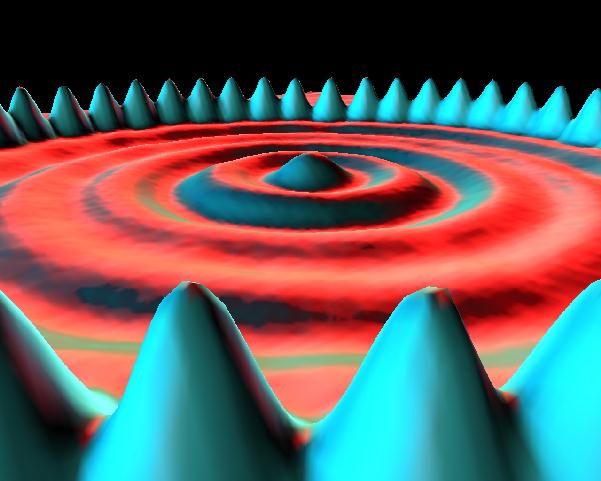
PHY_291
baranger@phy.duke.eduPhysics at the Cutting Edge
Fall 2000
Prof. Harold Baranger Class Time: TH 9:10-10:25The main goal of this course is to use the basic physics and physics tools that students have learned in previous courses to investigate exciting current research topics. The course is mainly aimed at senior Physics majors, and assumes that the students have some knowledge of both quantum mechanics and statistical mechanics (see Prerequisites above). A crucial component of the course is a final project and paper on a subject of the student's choice; this should involve reading and synthesizing work from the original research literature. Note in addition that this course satisfies the "writing in the disciplines" requirement of C2000.
Class Room: Room 234 Physics Building (may change to 054)I plan to cover 5 topics this year. The first half of the course will be topics from Nanoscience. Here is a link to a brief general blurb on nanoscience as well as a few words about nanoscience at Duke. The three specific topics for the first half are:
the Coulomb blockade, quantum dots, and single-electron transistors-- Scanning Tunneling Microscopy (STM)-what it is, how it works, and what it has revealed about surfaces, atoms, and materials. STM is wonderful technique, about 15 years old, which probes solids on the atomic scale. Here is an example, an image of the electron density on a copper surface (orange ripples) which has iron atoms placed on it and assembled into a ring (blue humps). (Image from the IBM STM page).
Quantum Cryptography, Computing, and Teleportation-the basic idea of "qubits" and computing with them, what computations they may be useful for, and the possibility that it will ever be practical (unfortunately, quite remote).
The topics for the second half of the course will depend on the interests of the students. They may consists of additional topics in nanoscience, or of topics from other areas of physics. Possibilities for the latter include, for example,the inflationary universe-the current leading idea in cosmology, supported by recent experiments on the inhomogeneity of the microwave background radiation, extrasolar planets-in the last three years, the number of known planets orbiting stars outside our solar system has gone from 0 to several dozen. How are these planets located? What are they like? Bose-Einstein condensates of atoms-currently one of the hottest topic in atomic physics. How are these macroscopic quantum objects formed?
Last modified: 28-Aug-00
